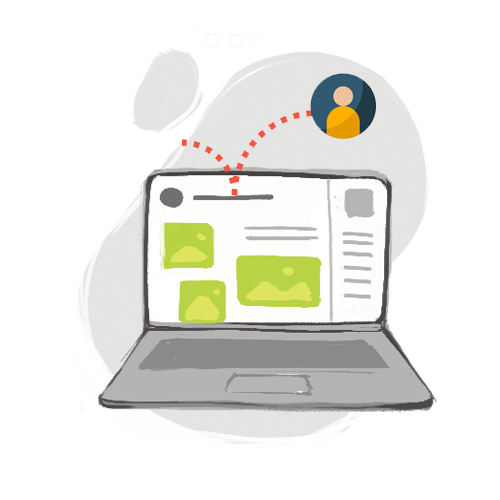The End of Google Universal Analytics

Introduction: Google Announces they are sunsetting Universal Analytics
E-Commerce business owners beware! The previous generation of Google Analytics – Universal Analytics or UA in short – will soon be sunset, Google announced today. What is still the most widespread version of Google Analytics used in e-commerce websites will become unusable starting July 1, 2023. This means that it’s only a matter of time before everyone is using Google Analytics 4 (aka GA4). GA4, which was first introduced in July 2019, comes with many changes. The data analysis is more granular, user-friendly, and up-to-date on privacy controls. We’ll get into some of that below while to explain the significance of this announcement!
Before we do, it is important to note that, for existing business owners, historical data cannot be transferred over from Google Universal Analytics to Google Analytics 4. However, there is no need to get worked up – universal analytics will be sunset only next year, meaning business owners can learn to leverage the perks of Google Analytics 4 alongside their Universal analytics account in the meantime. That means as you “learn the ropes” to leverage GA4, you can continue using your existing Google Universal Analytics account.
That being said, business owners will want to migrate sooner rather than later to Google Analytics 4 – learn about some of the key feature updates below!
Integration with All Device Across Web & Mobile
First, it’s important to note that Google Analytics 4 will streamline and consolidate user data from both web and mobile platforms. Google’s new system will empower business owners to track user data across each device they use, painting a more complete picture of user behavior.
Business owners used to need a Firebase and Universal analytics account to share data, but GA4 brings all the customer data from mobile and web under one roof. Multiple data streams – all from different devices and web apps – can be viewed together seamlessly.
No More Cookies
We know they sound cute, but user cookies are a key weakness in user privacy. At this point, they are basically archaic, and tightening user privacy laws will make cookie tracking technology obsolete within the next few years.
Google Analytics 4 gets out in front of this issue by preparing for this “cookieless world.” All data, while connected to a web ID for the user, is completely anonymized. Powerful software fills in the gaps when you are modeling user behavior, meaning businesses can still predict customer behavior effectively while not jeopardizing their personal data.
If you rely on third-party data to collect user info, it is time to get acquainted with Google Analytics 4. It will allow you to continue gathering valuable user data without endangering their privacy or coming across as an “invasive” online company.
Everything is an Event
While Google Universal Analytics struggled to patch together a coherent picture of user behavior, Google Analytics 4 treats every user action as an “event,” creating a constellation of user data that clearly tells a story through their online behavior.
Before, business owners had to essentially infer parts of user data because the data simply was not streamlined or categorized together. You had to pick through different data streams, identify the same user, and manually put together a picture of the user’s online behavior. With Google Analytics 4, every single event is tracked and stored in the same system.
For example, imagine a potential customer first checked out your site on a Facebook mobile ad. Then, after getting home from work, they visited your online website from their computer, where they “signed up” for an account and e-mail alerts. After that, later in the evening while browsing on their phone, they receive an email with a “special deal” and decide to download your business’s app to formally place their first order. Google analytics 4 would trace that entire series of decisions, recording each as a unique “event” that illustrates how users are discovering and utilizing your online business!
Furthermore, these user events are organized to provide advanced analysis reports and helpful data visualizations that far exceed the power of Google Universal Analytics. Purchase probabilities, funnel reports, custom audience segment overlap, visualizations of user activity down to the “per minute” detail are just some of the features business owners can now leverage with the release of Google Analytics 4.
Conclusion: Ad360 Can Help Businesses Migrate to GA4 & Fully Leverage New Features
Clients of Ad360 will receive support transferring data and migrating to the new Google Analytics 4 interface. While the new Google Analytics interface does look different, remember it serves the same purpose: helping online businesses increase sales and thrive in the e-commerce ecosystem.
This is a significant step forward in data privacy and user data analysis, and we are so excited to be at the forefront of the upcoming Google analytics revolution! If you want support when learning how to best leverage the new features of Google Analytics 4, reach out for a free call with Ad360 today!
Make Sense of Bounce Rate To Boost Sales!

Introduction – Bouncing Across the Web
When you browse the web, consider how quickly you can navigate to a page, decide in a fraction of a second, “Mmmm… no.” Then, you repeat the same bouncy activity on a new site, hopping webpage to webpage until you finally find a landing page that catches your attention.
… What about all those pages you bounced through without a second thought?? What if your business ends up like that?!!?
That is why analyzing your online business’s bounce rate is so important!
This blog covers the basics of bounce rates, the percent of visitors who navigate from your site after seeing only one page. We’ll cover how to frame your bounce rate among other key analytics, as well as marketing strategies to reduce the bounce rate. Reduced bounce rate = increased sales, so it’s worth a quick look!
Bounce Rate: A “Bird’s Eye View” of Your Site Activity
It’s best to think of bounce rate as a general “top-down” web metric. While bounce rates do not tell the whole story of your site, they do give an interesting perspective on how many folks click through your page without thinking twice.
For optimizing your online store and increasing sales, it’s worth paying attention to a fundamental metric like bounce rate. Just remember it is only one piece of the Google analytics puzzle, so there is hope for your business even if it currently has a high bounce rate!
Key Steps to Improve your Bounce Rate & Increase Sales
With that said, below are key steps you can take today to improve your bounce rate and boost customer sales. Review to improve your online marketing savvy:
- Page load time
Starting off with a straightforward one here – your webpages should take no longer than 2-3 seconds to load! Why? Over half of visitors will bounce after a 3 second delay.
Run a quick test yourself on a device outside your network to see how quickly your site loads. You may to compress site data, reduce site redirections, streamline Javascript/HTML code, improve server infrastructure, or use a Content Delivery Network (CDN) to help boost up your page load time. User Google’s pagespeed tool linked here to check your load time! Sometime as simple as reducing the size of images on a page can improve its speed, so make sure to check your page load time out!
- “Let your webpages breathe”
Remember the example in the intro – browsing the web is usually a passive activity. Your site must cater to the visitor, not the other way around. If the webpage they land on is cluttered, they’ll say, “Oh geez, I don’t what I’m supposed to look at,” and move on.
Thus, it’s best to break up your webpage info. Do not be afraid of having some blank space in between content! In fact, it “lets the user up” to breath and gives them a second to process your site’s presentation.
- Use heat map analytics to see exactly where visitors’ eyeballs are first drawn
Heat map analytics can be a useful tool for showing exactly where visitors are drawn to most on your webpage. The heat map will “light up” orange/red, informing you where their eyes are first drawn to. Knowing that key info helps you reconstruct the user experience from their point of view. Doing so is a surefire way to increase your online sales!
- Cut down on excessive widgets and sidebars
Having key widgets or sidebars helps bring a helpful dynamic element to your site. However, some businesses use them to the point it overtakes and distracts from the actual content! Moreover, added sidebars could also contain Javascript or HTML errors that cause issues for users. Tactfully employ widgets, as they will potentially sap your customer’s attention away from placing an order.
- Give each webpage a central focus that funnels visitors to a sales deal
Help visitors keep their eye on the prize! Each webpage should contain a healthy balance of content and “call to action” buttons that funnel them along to the checkout page. In other words, make sure each webpage brings it back to your “bread and butter” for increasing sales.
- Clear, easy search bar that covers all your pages
The best-performing websites have an easy-to-use, fluid search bar that searches all content within the site. Think of it like constructing a “Mini-Google” that helps visitors sift through all the products and pages you have available! The quick the search bar loads as the user types, the more likely they are to purchase products and boost your sales.
- Optimize mobile versions of your online store for increased sales
Some Shopify owners think they are all set after setting up a “desktop” version of their site… but remember we live in the Instagram Era. You neeeeeeeeed to craft a mobile-friendly version of your store that effectively condenses your webpages down to a phone screen. This is why successful businesses research creating a separate “app version” of their product. They want to streamline the mobile user experience to boost their sales!
Conclusion – Ad360 is Here to Help Reduce your Bounce Rate!
If you feel implementing any of the above-mentioned ideas sounds too time-consuming, reach out to try a free demo at Ad360 today! We offer a free evaluation of your website’s metrics, providing concrete, actionable marketing solutions for your site. That way, you can be happy, productive, and successful while you increase your sales online 😊 Cheers, we hope that you enjoyed this breakdown of bounce rates!